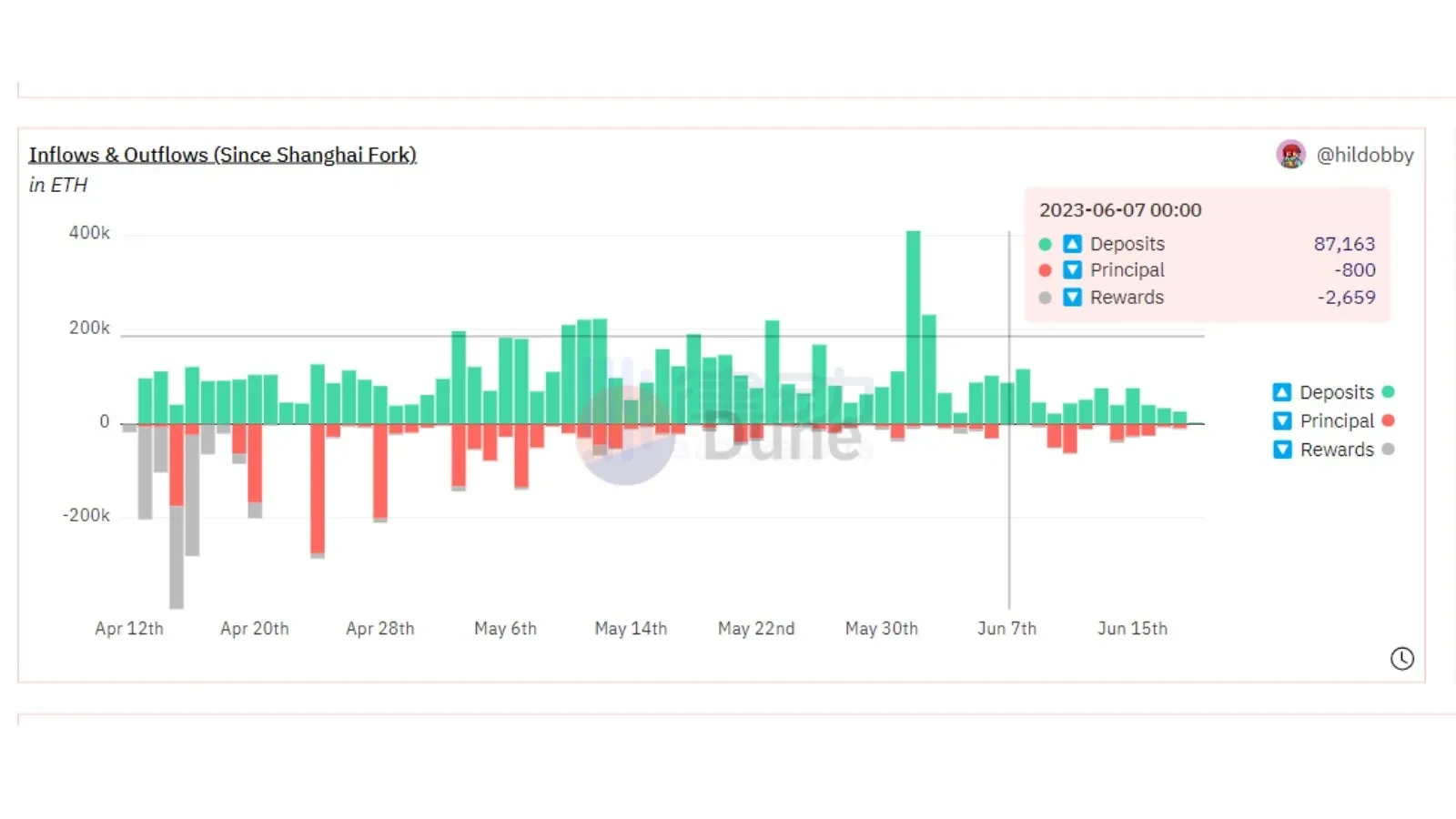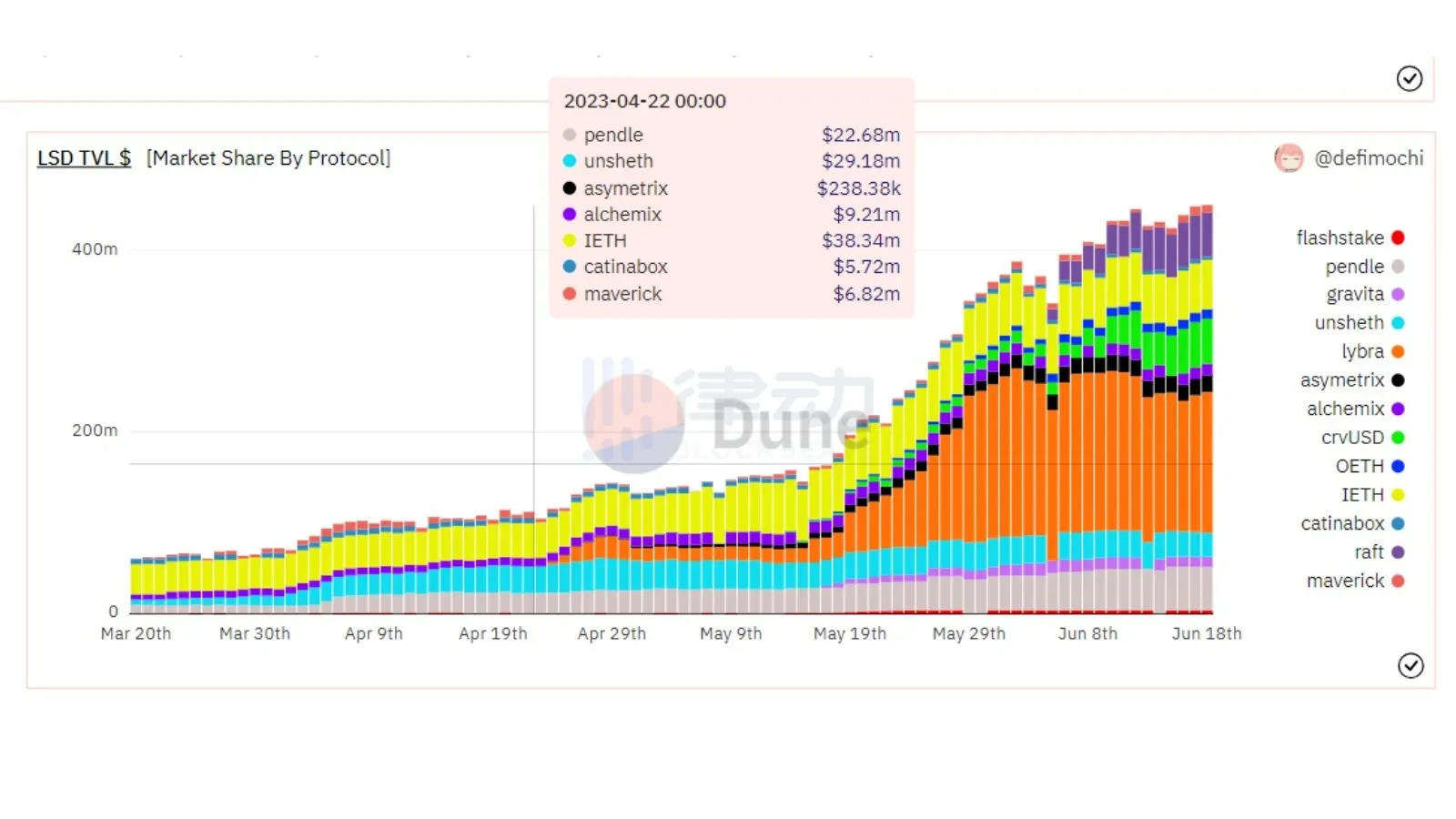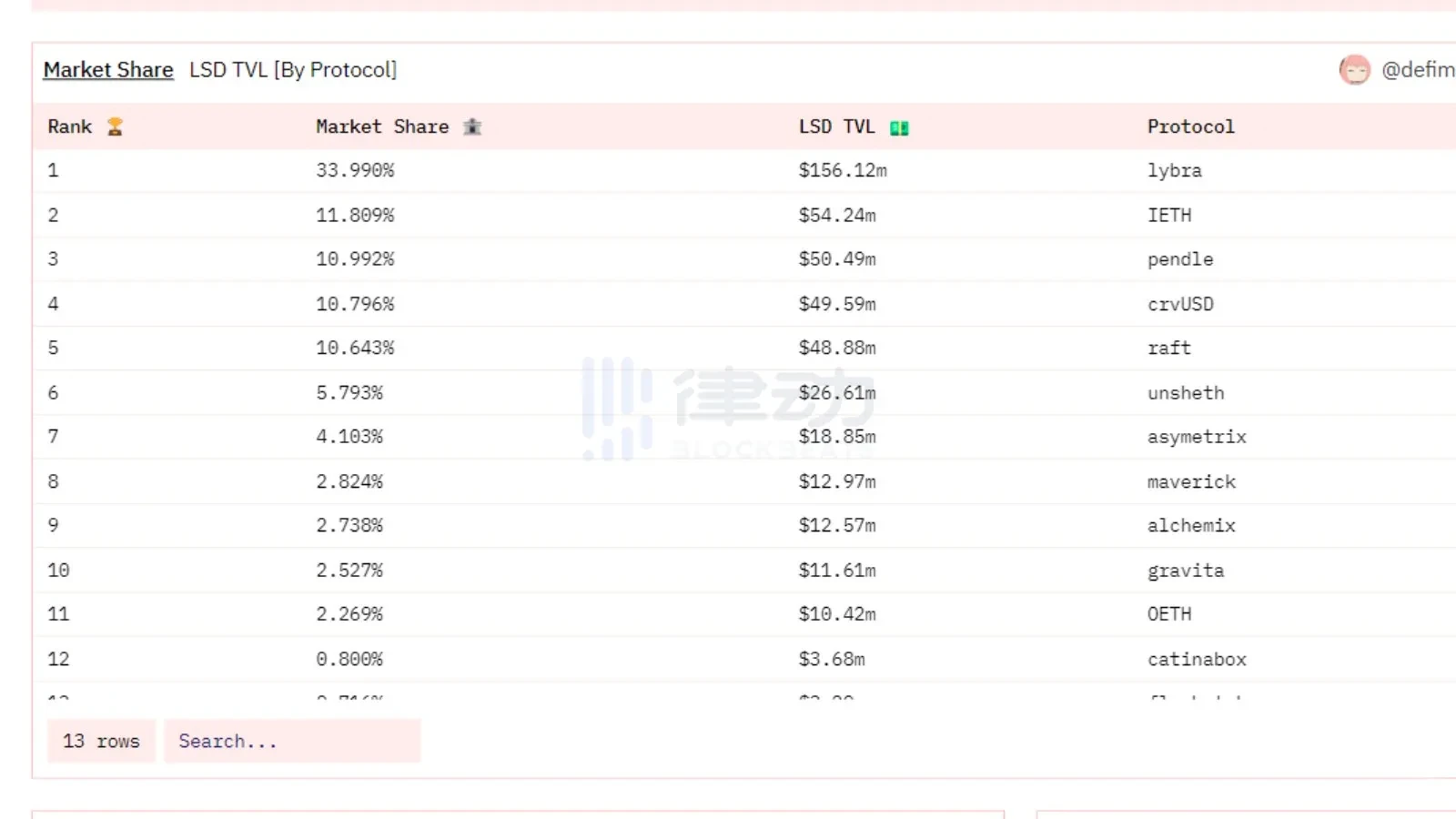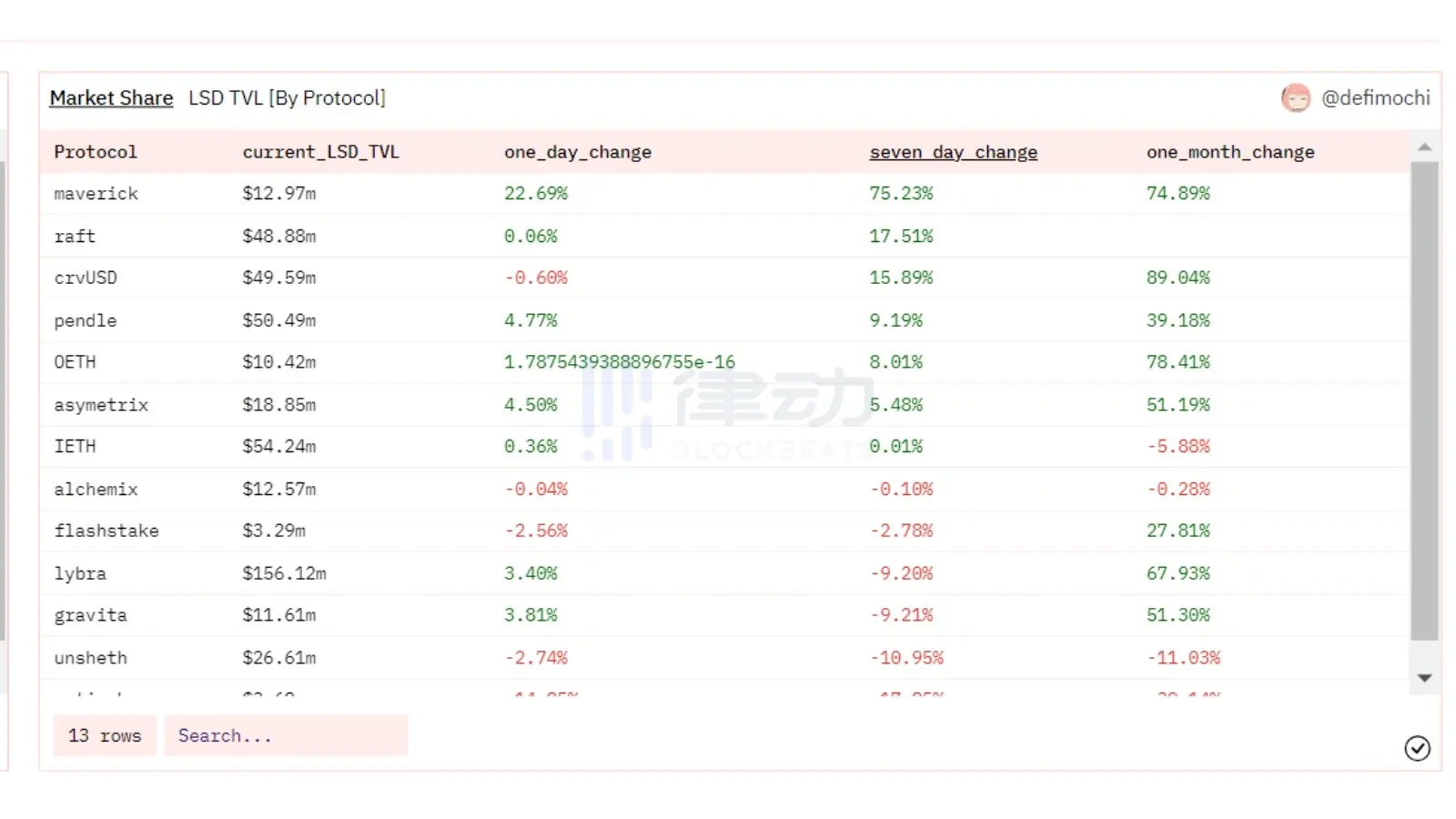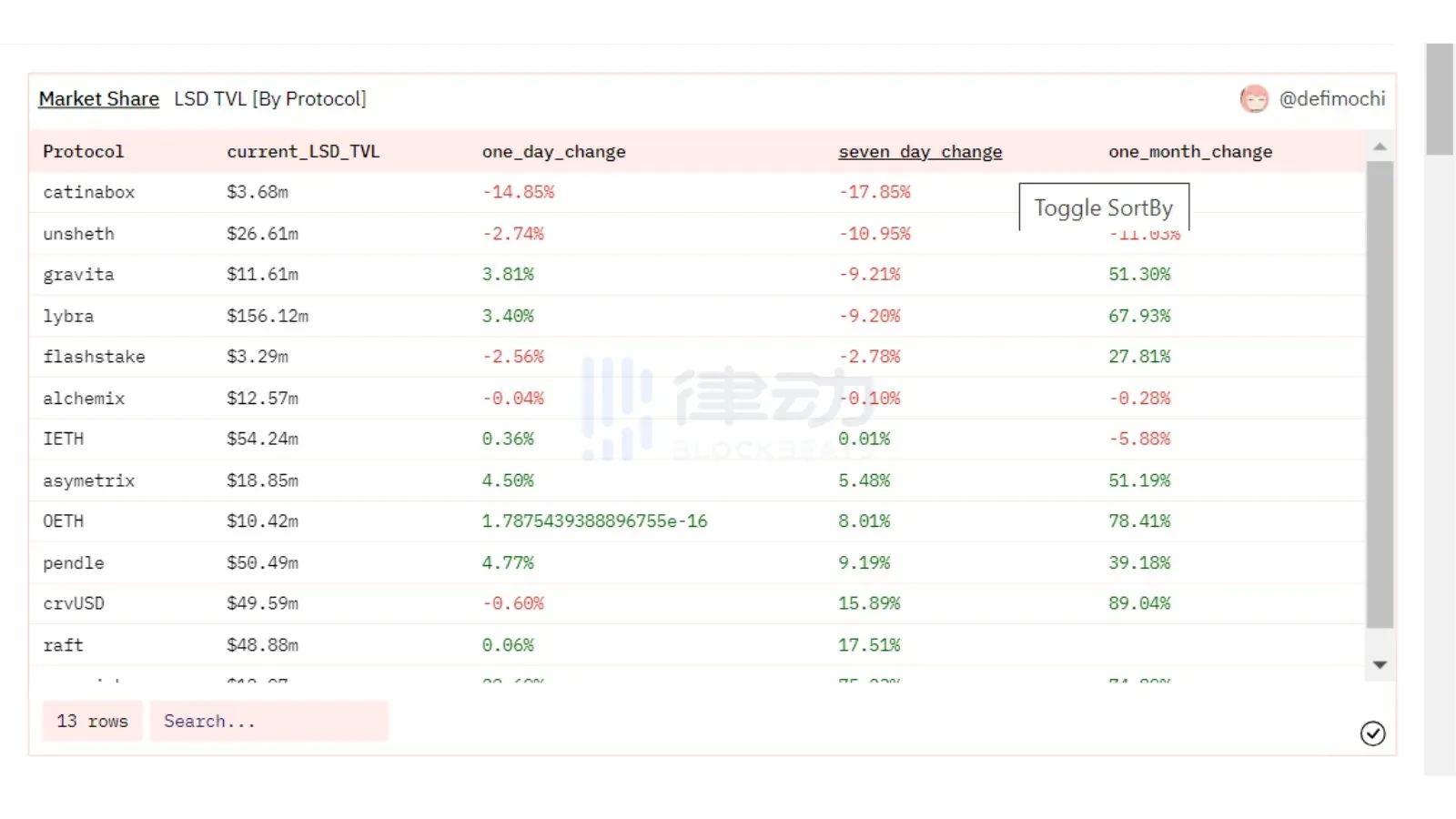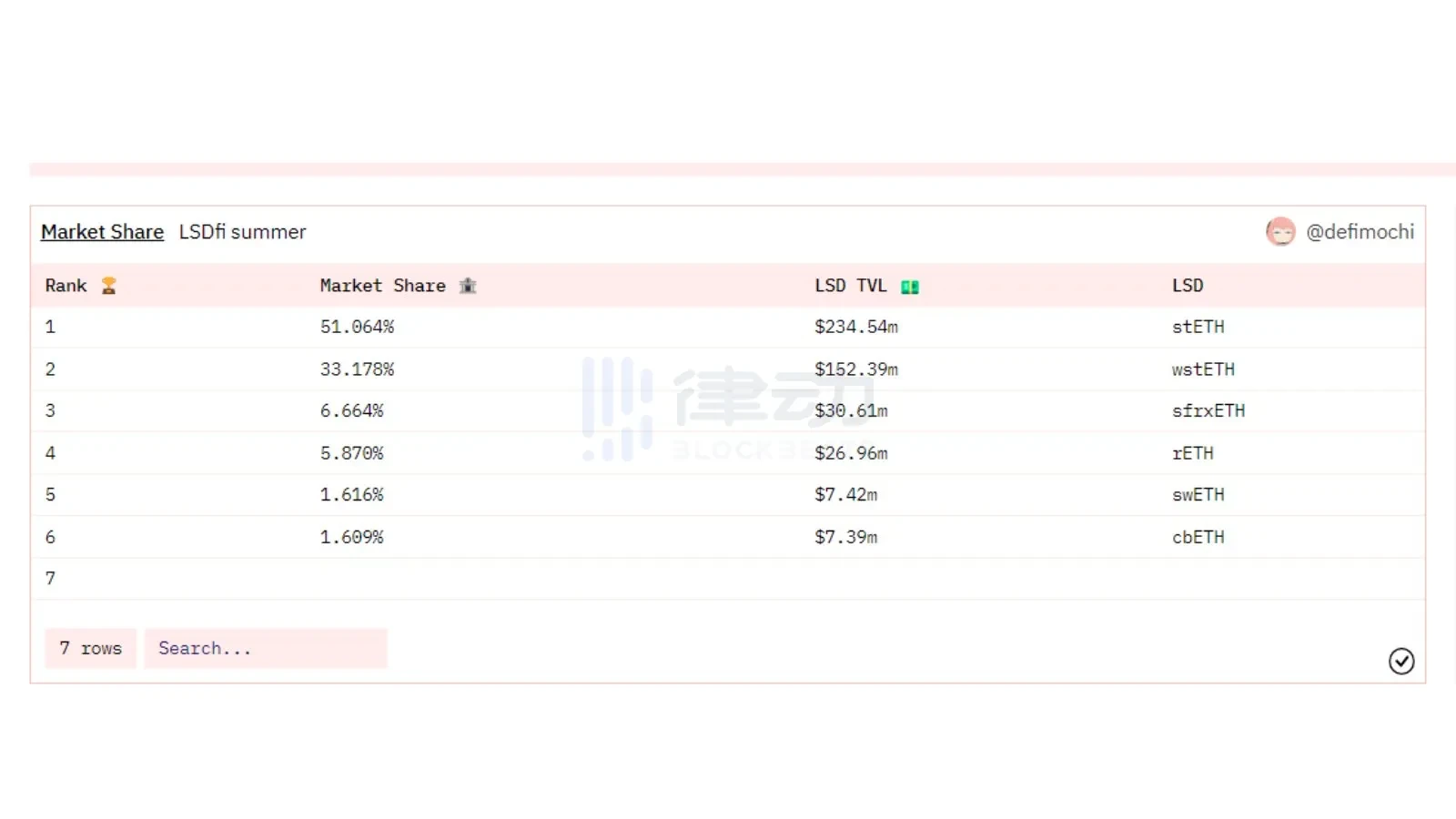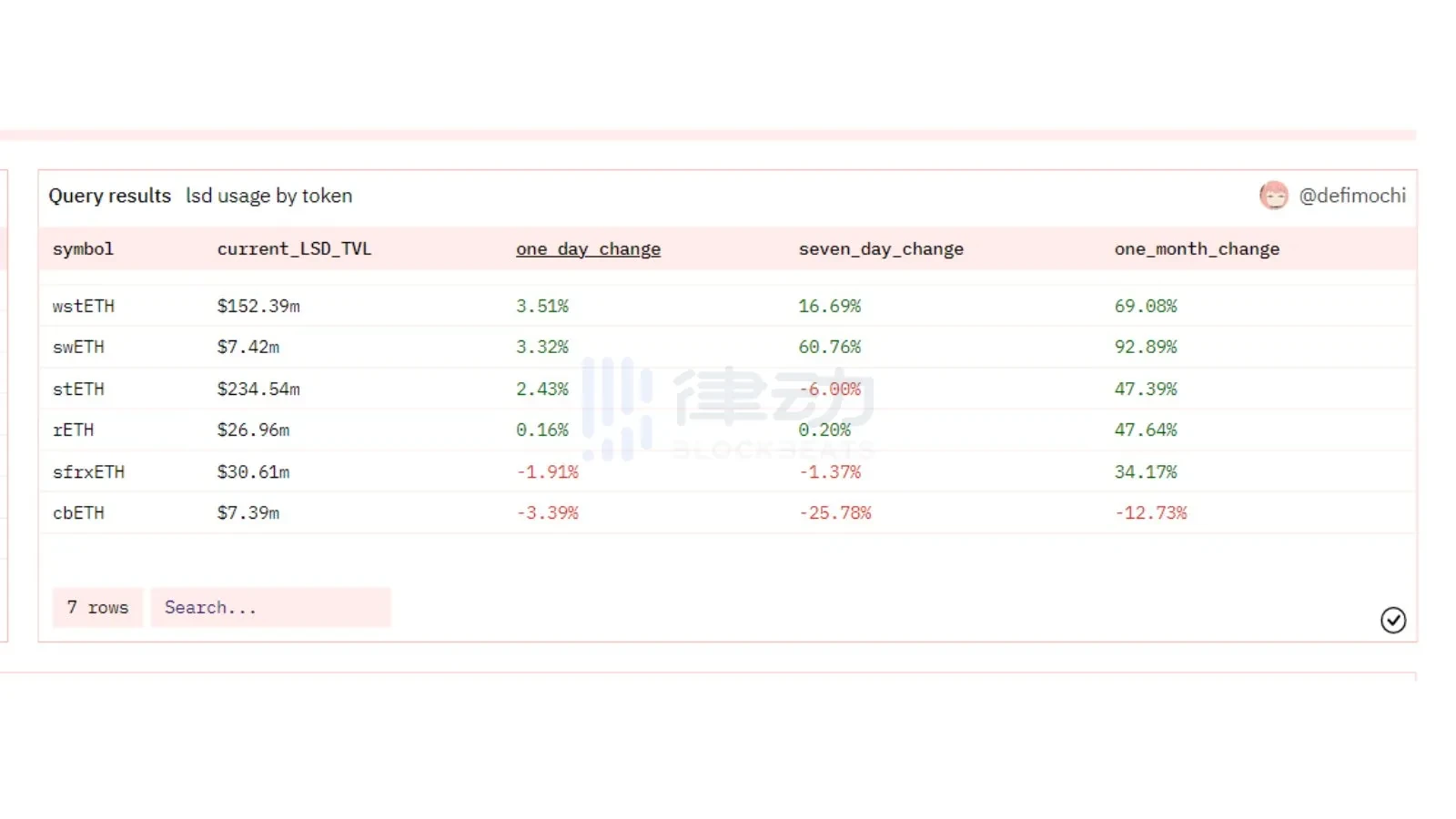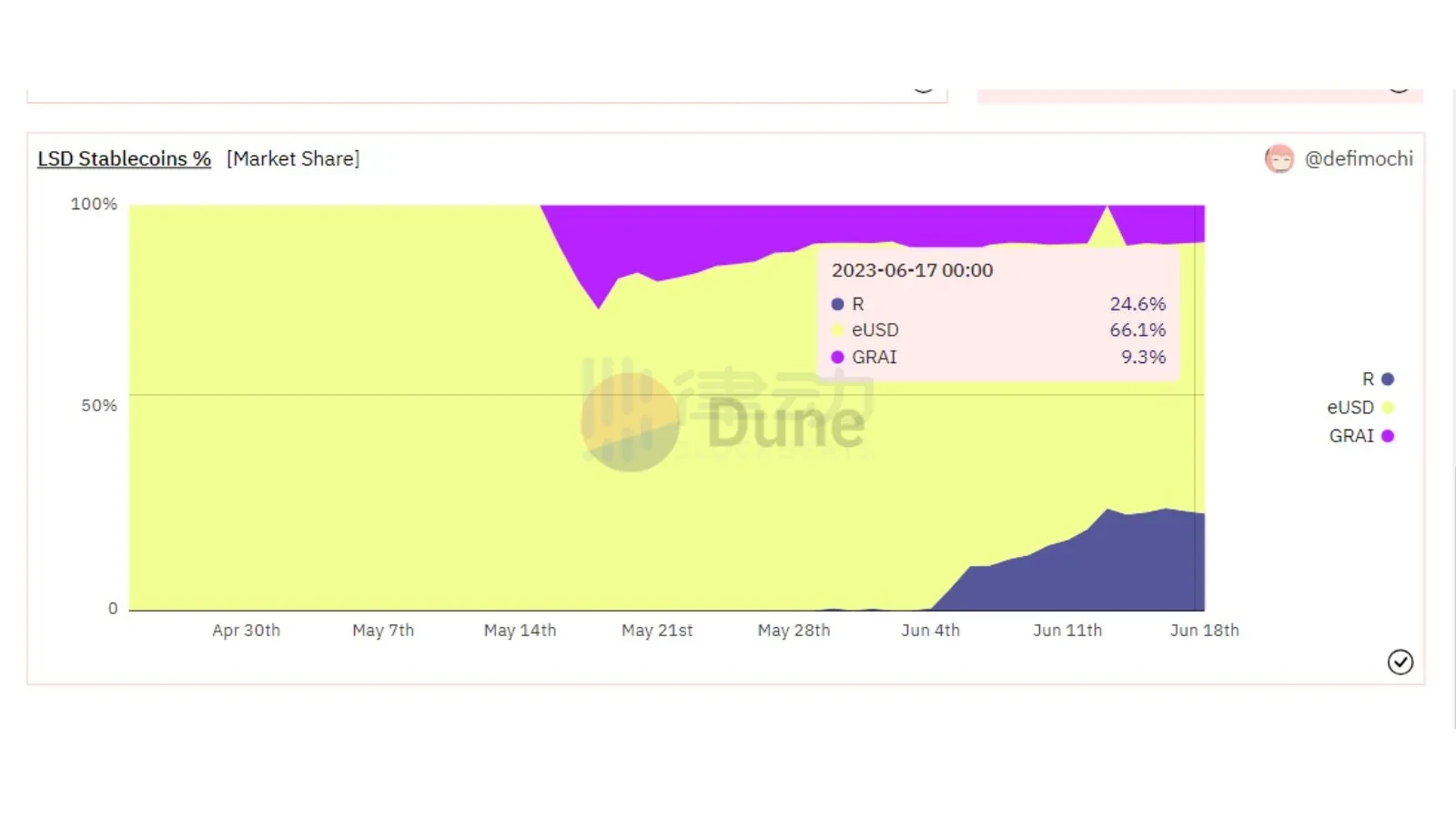Amidst the warlord chaos of LSDfi, who will become the “King of Hanzhong”?
Who will be the "King of Hanzhong" amidst the warlord chaos of LSDfi?Original author: Defi_Mochi
Original translation: Jaleel, BlockBeats
LSDfi is the latest narrative catching Binance’s attention, with a potential market value of $16.9 billion and a growth of 102% in just three weeks!
In this LSDfi war, who will win? Mochi analyzes the data from DuneAnalytics to help you find the answer!
- In-depth analysis of the innovation and disruption of Uniswap V4
- Comparing Perp DEX protocol: GMX, Gains, dYdX…
- SatScribe: Game rule changer for rare sat hunting
Since Ethereum’s Shapella (Shapella = Shanghai + Capella) upgrade, Ethereum’s staking has been increasing, with the total amount of $ETH staked growing from 15.3% before the Shanghai upgrade to 19.2%. Meanwhile, after the launch of @LidoFinance V2, the beacon chain has received a lot of deposits.
In less than a month since Mochi released this dashboard, LSDfi’s TVL has grown from $200 million to over $400 million in just a few weeks, including new protocols such as Swell, Maverick Protocol, and Raft.
Surprisingly, Lybra Finance still leads the LSDfi market share, despite its token price falling over 80%, suggesting a healthier issuance situation. At the same time, Raft, which was launched in early June, has entered the top five, with a total value of $stETH exceeding $48 million.
After enabling $wstETH as collateral, the growth momentum of $crvUSD shows no signs of slowing down, with a monthly growth rate of over 89% and a weekly growth rate of 16%. Maverick Protocol’s TVL has risen significantly after the announcement of $MAV and has attracted many LPs with the capital efficiency of its fund pool, while Pendle’s TVL continues to grow steadily.
Here are last week’s biggest losers in terms of Total Value Locked (TVL) decrease: Lybra Finance’s TVL decreased as expected due to the drop in LBR price, and TVL may have flowed out of Gravita Protocol due to airdrop uncertainty. unshETH recently suffered an attack resulting in $375k in funds being drained.
In terms of Liquidity Staking Tokens (LSTs) in use, wstETH and stETH still dominate with a market share of over 85%. This is not surprising as the circulating supply of stETH is almost 10 times that of all other LSTs combined.
Another interesting observation is that the frequency of adoption of Swell has been steadily increasing, with LSDfi using over $7 million of the $45 million of circulating $swETH. With the launch of $frxETH v2 and all plans on the frax chain, Mochi expects more people to adopt $sfrxETH.
In LSDfi stablecoins, Raft’s $R has quickly captured 24% of the market share, while the circulating supply of $GRAI has decreased. Note that $crvUSD is not included in this chart.
Mochi’s observations and conclusions: Given LSDfi’s rapid expansion over the past month, Mochi’s argument that the industry will grow tenfold has been almost proven true, as it has grown over 102% in just 3 weeks. Strangely enough, the adoption rate of Flashstake doesn’t seem to have increased that much so far; Pendle continues to attract TVL through Penpie and Equilibria incentive pools; and despite the drop in LBR price, I’m still quite proud of @LybraFinanceLSD for maintaining TVL.
We will continue to update Blocking; if you have any questions or suggestions, please contact us!
Was this article helpful?
93 out of 132 found this helpful
Related articles
- Messari: Uniswap V4, the moment for the platform of crypto applications
- Circle restarts buying US treasury bonds as USDC reserve assets
- Messari: Exploring the Evolution of the Web3 Community
- Viewpoint: Arbitrum leads the way into the Layer3 era, Orbit’s innovation and risks
- Is the trend of ordinals spreading to ETH a return or a throwback?
- Long Push: The Opportunities and Challenges of the L3 Era with the Launch of Arbitrum Orbit
- Analysis of FalconX’s On-Chain Behavior: Will the Impact of SEC Persist and Will Institutions Seize the Opportunity to Buy Low?

